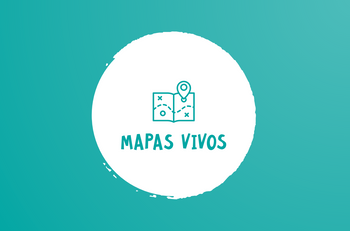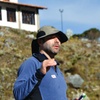The facilitators who will be responsible for implementing the Living Maps methodology with the participants are selected. The selection process involves identifying individuals who have the necessary skills, knowledge, and passion to effectively guide and facilitate Living Maps sessions. These facilitators play a crucial role in creating a supportive and engaging learning environment, as they will be responsible for guiding participants through the different phases of the Living Maps process.
A comfortable space is prepared within the educational institution or community to facilitate the Living Maps sessions. The objective is to create an environment conducive to learning, reflection and connection with nature. The space must be comfortable and welcoming, allowing the participants to feel comfortable and fully engaged in the activities. It should be free from distractions and interruptions, providing a quiet and private environment for participants to focus on their experiences and observations. By preparing a comfortable space, the institution or community sets the stage for meaningful and immersive experiences during Living Maps sessions, enhancing participants' ability to connect with their environment and deepen their understanding of the natural world.
A virtual workshop is held with the facilitators to familiarize them with the Living Maps methodology and the principles of Fluid Learning. The workshop serves as an introduction to the concept and provides facilitators with the necessary knowledge and skills to implement Living Maps effectively. During the workshop, facilitators are guided through the various stages of Fluid Learning, a methodology that emphasizes an adaptable approach to learning. They learn about the goals and benefits of the Living Maps process and how it can be applied in their educational institution or community setting. A key component of the workshop is a hands-on activity in which facilitators create their own Living Map, following each stage of Fluid Learning. This hands-on exercise allows them to experience the process firsthand, gaining insights into the power of observation, reflection, and connection with nature. It also helps facilitators understand the steps involved in guiding participants through the Living Maps journey. By conducting this virtual workshop, facilitators are equipped with the necessary understanding and practical experience to effectively implement the Living Maps methodology with their students or community members. This allows them to confidently guide others in creating their own Living Maps and fostering a deeper connection to the natural world.
The facilitators carry out a practical session for the participants, in which they implement the Fluid Learning methodology in the context of Living Maps. The session is designed to guide participants through a transformative learning experience and allow them to create their own Living Maps.
The practical session is divided into four distinct phases, each with its own objectives and activities:
1. Arouse enthusiasm: In this phase, participants are introduced to the Living Maps methodology and its objectives. The facilitators seek to arouse enthusiasm and curiosity, generating a sense of excitement and interest in the participants.
2. Focusing attention: This phase focuses on developing the participants' ability to observe and pay attention to the natural world around them. Participants engage in exercises and activities that improve their perceptive and observation skills, allowing them to deepen their connection with their environment.
3. Direct experience: In this phase, the participants venture into the nearby natural environment to explore and observe elements of their environment. They engage in hands-on experiences, actively interacting with nature and documenting their observations and reflections on their Living Maps.
4. Share Inspiration: The final phase involves participants sharing their Living Maps and reflecting on their learning journey. They have the opportunity to express their ideas, inspirations and new understanding of the interconnectedness between themselves and the natural world. This sharing of experiences fosters a sense of community and encourages participants to learn from each other.
At the end of the workshop, the facilitators invite the participants to carry out a reflection exercise that leads them to consider their future actions as responsible inhabitants of the Earth. This closing session aims to inspire the participants to make positive changes in their lives and contribute to the well-being of the planet. The facilitators encourage the participants to reflect deeply on the knowledge and experiences gained during the workshop and how they can translate them into meaningful action. They are encouraged to reflect on the personal commitments they are willing to make and are encouraged to write down these commitments as a tangible reminder of their intention to be change agents. An evaluation is carried out to collect feedback from the participants. This feedback is essential to understand the effectiveness of the Living Maps implementation and to identify areas for improvement.









 "Embark on an exciting journey of Living Maps implementation with our step-by-step guide!"
- Luis Alberto Camargo
"Embark on an exciting journey of Living Maps implementation with our step-by-step guide!"
- Luis Alberto Camargo
